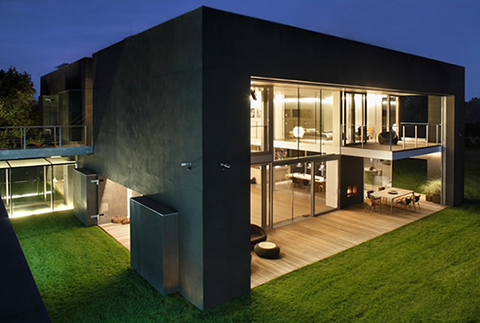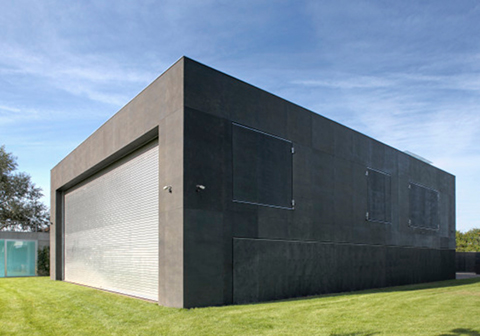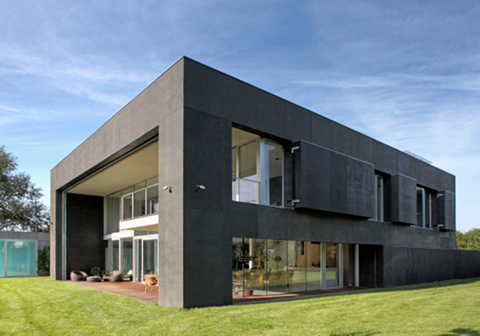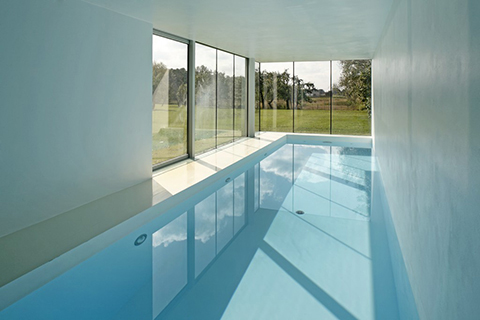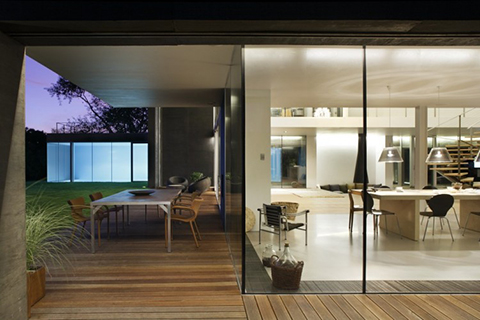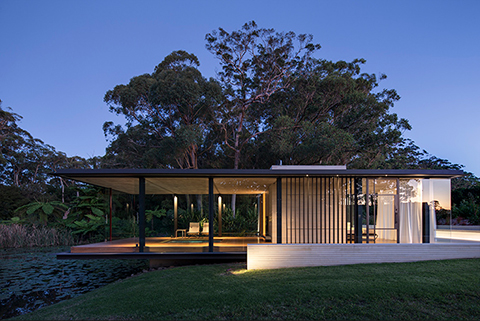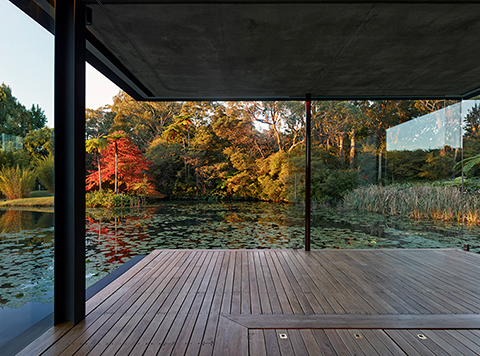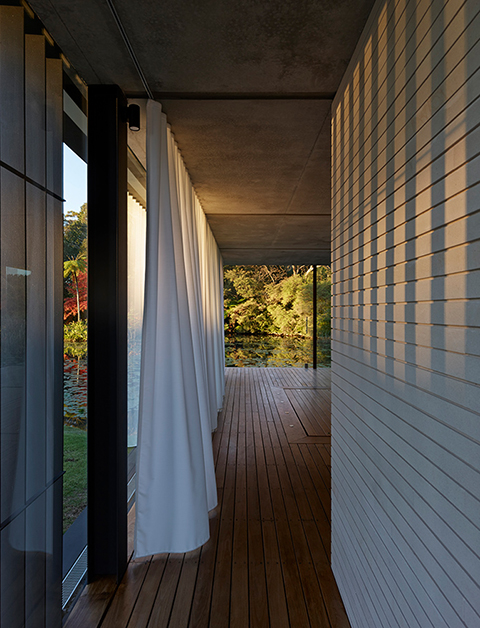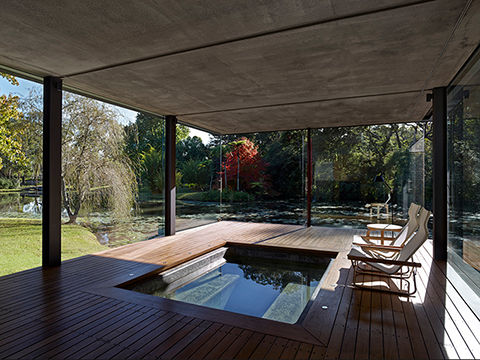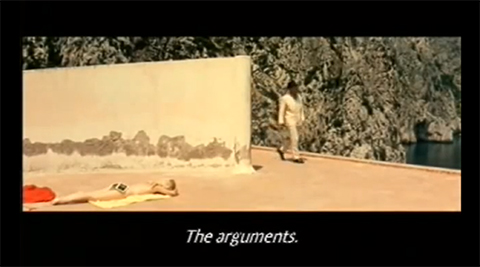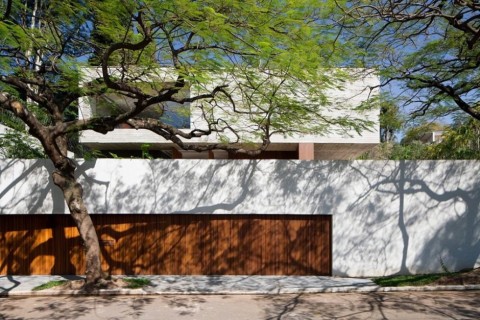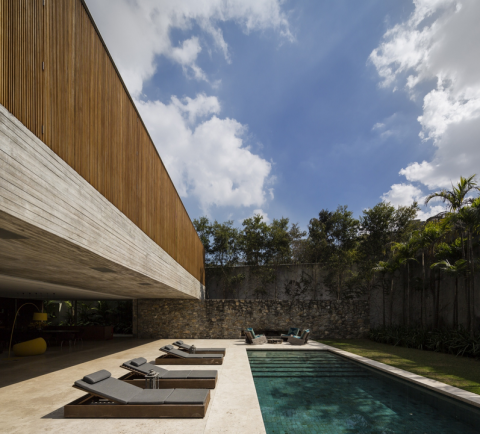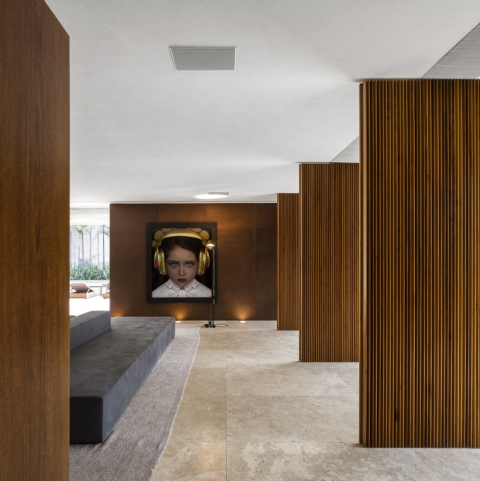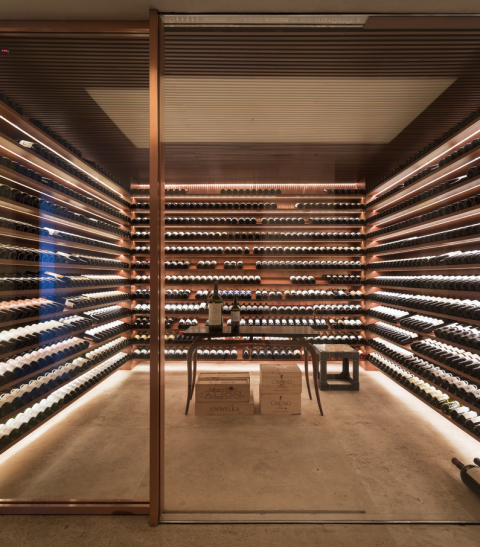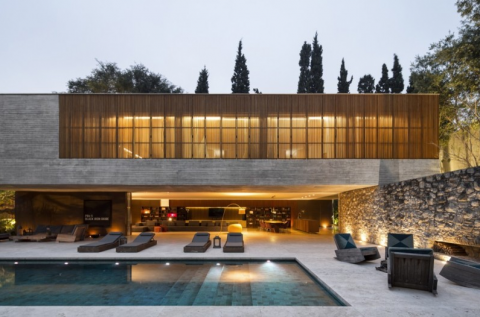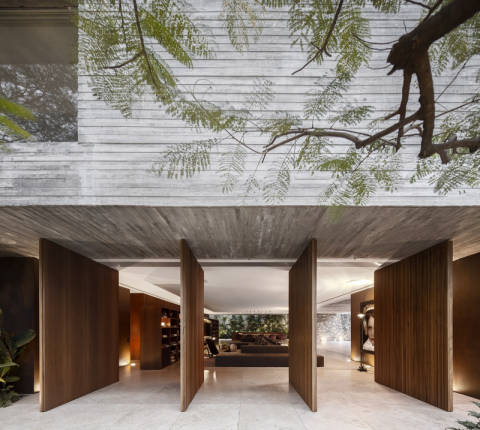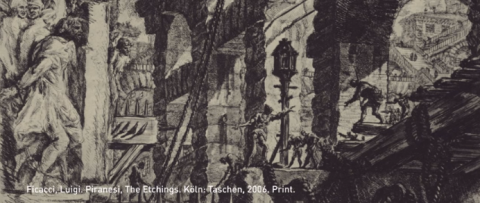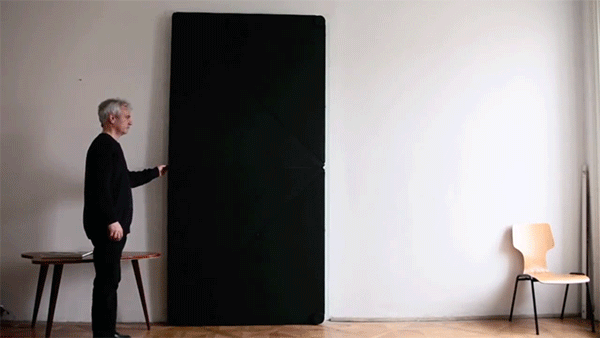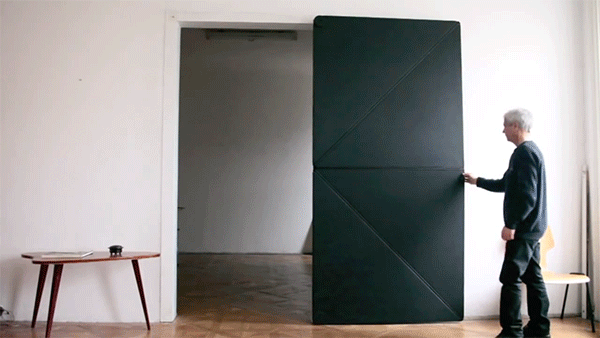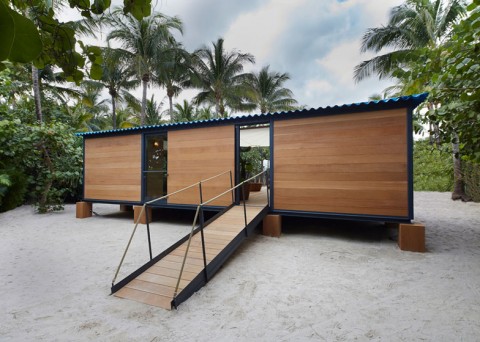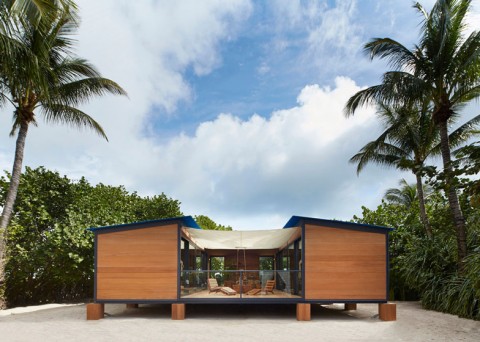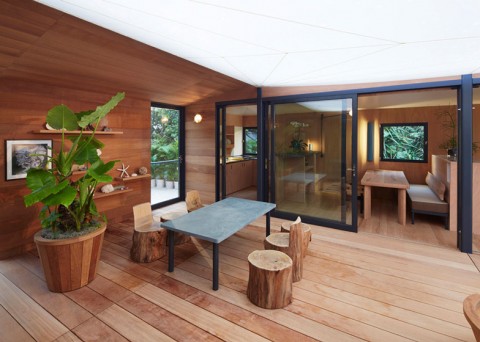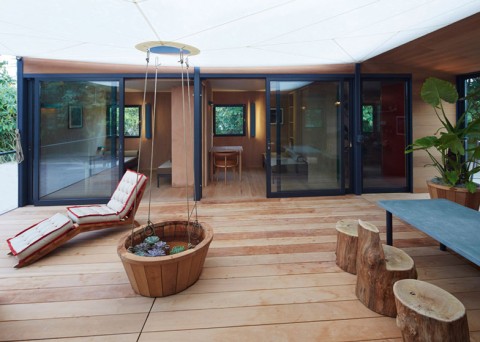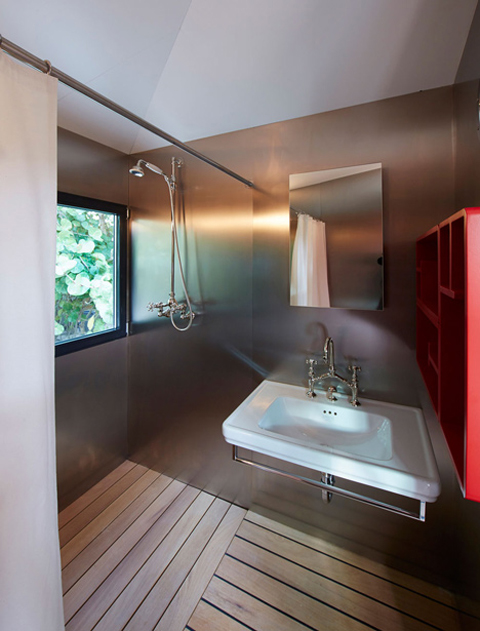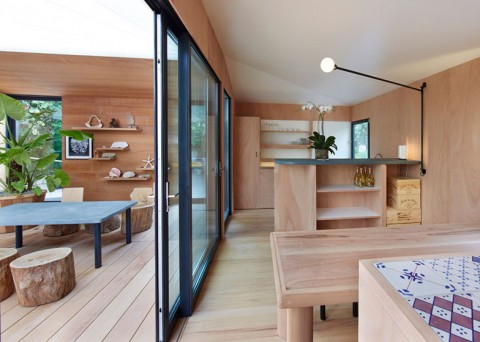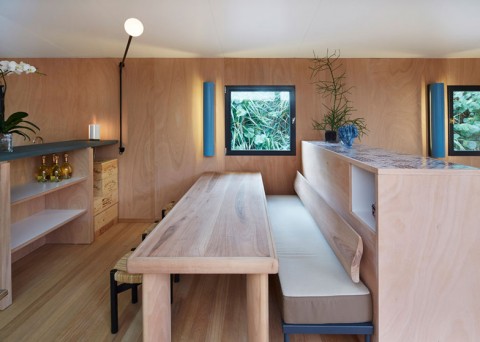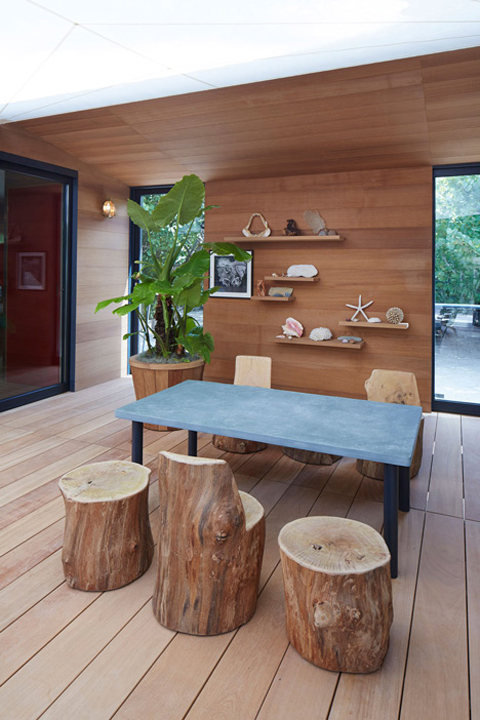if you are an aspiring super villain looking for a place to stay until you can afford a hollow volcano or a space station, the safe house might be the place for you. designed by robert konieczny for a client who required a feeling of maximum security, it makes us wonder who the owner might have pissed off. by kt
architecture
wirra willa
a design by matthew woodward architecture in somersby, australia.
the wirra willa pavilion is a miesian-inspired glass pavilion situated in a vibrant and fertile, rural landscape setting not dissimilar to that seen in a claude monet painting.
the aim was to create a multifunctional space that provided an experiential opportunity for the visitor so they could appreciate, to the full extent, the inherent beauty of the landscape. the specific site is situated remotely on a private property that totals 80 acres and was originally established as a stone and citrus fruit orchard. there are well established gardens intertwined throughout.
the pavilion cantilevers over the natural spring fed dam to connect the inhabitant to a sublime environment that is pulsing with an abundance of life and natural beauty. it is essentially used as a private and remote spa house and guest retreat that compliments the existing residence on the property.
simplicity is essential to the success of the project. the approach was to maintain simplicity through each stage of the design process in order to create an elegant, unobtrusive incision into the landscape setting that allows for both prospect and refuge.
the use of the pavilion is multifunctional. the design needed to be flexible and adaptable to accommodate for various uses during the changing seasons throughout the year.
site selection was critical from a sustainability perspective; the location was selected for its remoteness, opportunity for prospect, and orientation to the sun and prevailing winds.
the orientation of the pavilion in the northeast captures the sun and responds to prevailing winds. in the warmer summer months, the sliding glass panels can open up to allow for natural cross ventilation by inviting the prevailing breezes, while in the cooler winter, thermal mass of materials conduct heat from the sun to allow for a relatively constant internal climate.
the materiality was selected for the inherent tellurian characteristics to harmonize the building to the natural setting. the geometry itself is simple; the building is essentially two bisecting rectangular prisms, one created from composite steel, concrete and glass, and the other a sandstone cladded core. the structural solution was derived from a rationalized ‘grid’ system.
it is a special place that one can escape to find peace and solitude.
(source: contemporist) by kgb
taking it back to 1963
if you have not seen casa malaparte before, make sure to check out this previous post about the amazing house. the building is featured in the godard movie le mépris with an equally amazing trailer.by kt
the ipês house
the design of a floating box with well-defined edges and perfect symmetry seems to be popular with designers across the globe as we are seeing homes with similar design take shape in most of europe, latin america and the us. that does not mean that each of them stops adding their own individual touch as the ipês house in sao paulo, brazil showcases. while the home itself looks like a beautiful floating box cast in concrete and wood, there is a lot more to it than meets the eye.
designed by marcio kogan’s StudioMK27, the home is pretty much a perfect template for anyone who wishes to build a contemporary house that is both sophisticated and an absolute dream to live in. the ipês house looks like a giant concrete block floating over a dreamy glass base and this is achieved by the balanced use of concrete, wood and glass on the exterior, while the interiors remain spacious and light.
the wooden folds that can be opened and closed at your will give the bedrooms in the top floor all the privacy that they need and also allow for ample natural ventilation during daytime. neutral shades and the use of grays ensure that the interiors are chic and fashionable, with décor being kept uncomplicated and elegant. the design of the pool also complements the basic structure beautifully, while the ample patio space allows you to kick back and put your feet up after a long day’s work. (source: decoist) by kgb
vito acconci: the problem with art
vito acconci talks about the problems in art if not in architecture… by dd
Nicholas alan cope – whitewash
austrian artist, klemens torggler, reinvents the door
i was expecting this to come from a japanese artist not an austrian one, but ill take 2. torggler calls this his flip panel door, or “dryehplattentür”, also referred to as the evolution door. its made of paper stretched to structural beams. he has a few variations on this door, one with the origami-esque triangles that fold out to help the door move, and another system with rods that rotate two square panels. the door is currently a prototype but will come in glass wood and steel versions. by ht
prefabulous: charlotte perriand beach house
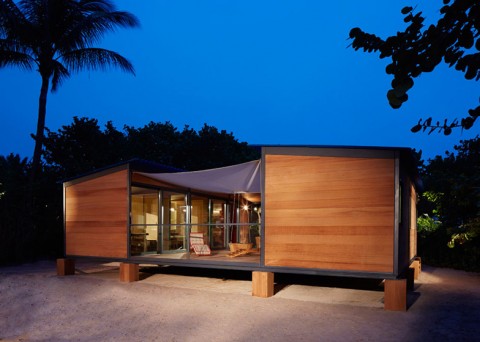
ed ruscha and some los angeles apartments
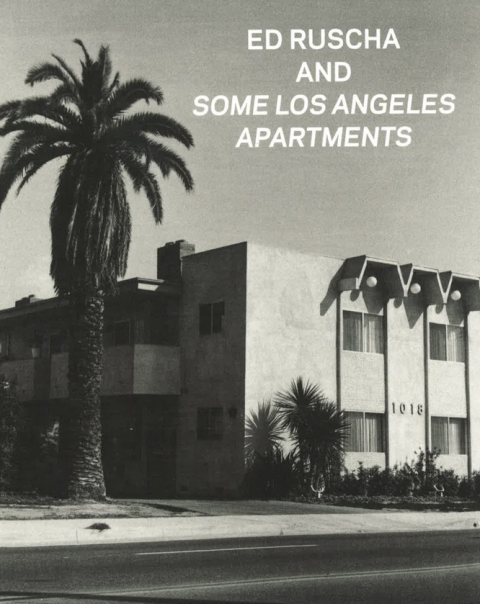
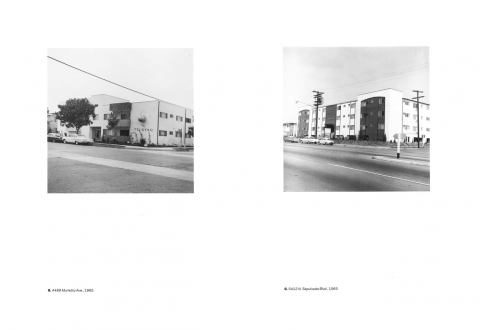
bikini bridge

SILK PAVILION – by mediated matter group
silk pavilion explores the relationship between digital and biological fabrication on product and architectural scales.
the primary structure was created of 26 polygonal panels made of silk threads laid down by a CNC (computer-numerically controlled) machine. inspired by the silkworm’s ability to generate a 3D cocoon out of a single multi-property silk thread (1km in length), the overall geometry of the pavilion was created using an algorithm that assigns a single continuous thread across patches providing various degrees of density.
overall density variation was informed by the silkworm itself deployed as a biological “printer” in the creation of a secondary structure. a swarm of 6,500 silkworms was positioned at the bottom rim of the scaffold spinning flat non-woven silk patches as they locally reinforced the gaps across CNC-deposited silk fibers. following their pupation stage the silkworms were removed. resulting moths can produce 1.5 million eggs with the potential of constructing up to 250 additional pavilions.
affected by spatial and environmental conditions including geometrical density as well as variation in natural light and heat, the silkworms were found to migrate to darker and denser areas. desired light effects informed variations in material organization across the surface area of the structure. a season-specific sun path diagram mapping solar trajectories in space dictated the location, size and density of apertures within the structure in order to lock-in rays of natural light entering the pavilion from south and east elevations. the central oculus is located against the east elevation and may be used as a sun-clock.
parallel basic research explored the use of silkworms as entities that can “compute” material organization based on external performance criteria. specifically, we explored the formation of non-woven fiber structures generated by the silkworms as a computational schema for determining shape and material optimization of fiber-based surface structures.
research and design by the mediated matter research group at the MIT media lab in collaboration with prof. fiorenzo omenetto (TUFTS university) and dr. james weaver (WYSS institute, harvard university). mediated matter researchers include markus kayser, jared laucks, carlos david Gonzalez uribe, jorge duro-royo and neri oxman (director). by bw
XAVIER VEILHAN – ARCHITECTONES – VDL RESEARCH HOUSE L.A.
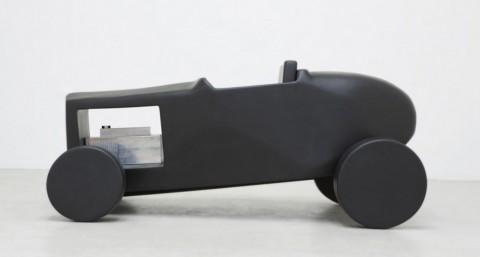
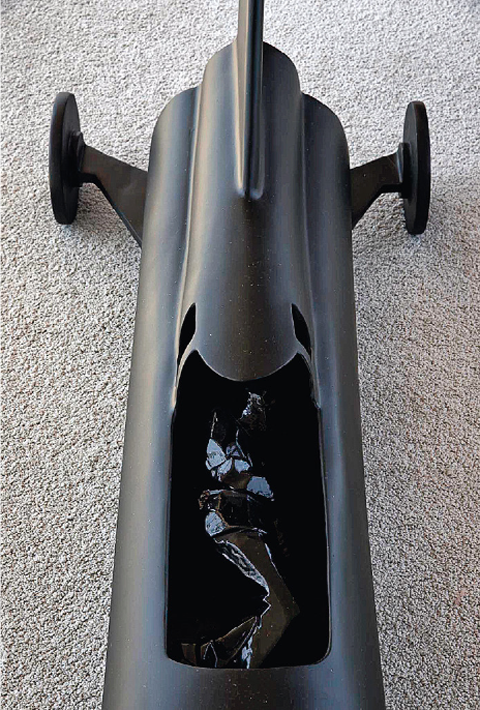
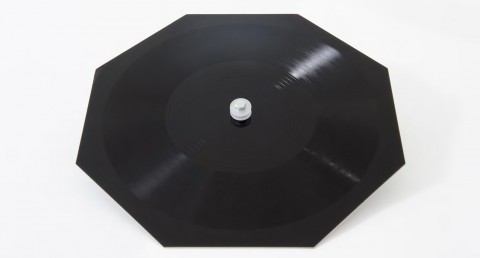
 a visual collective outlet of inspiration
a visual collective outlet of inspiration